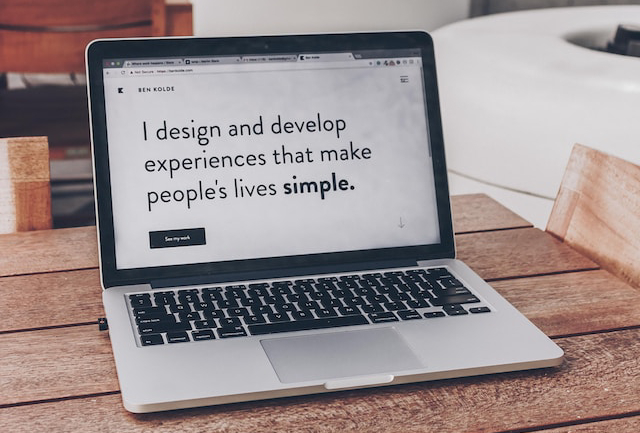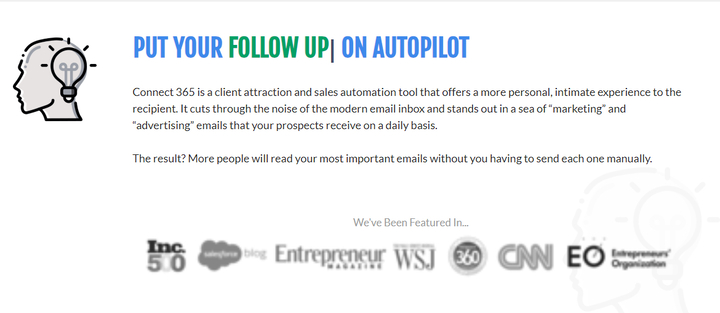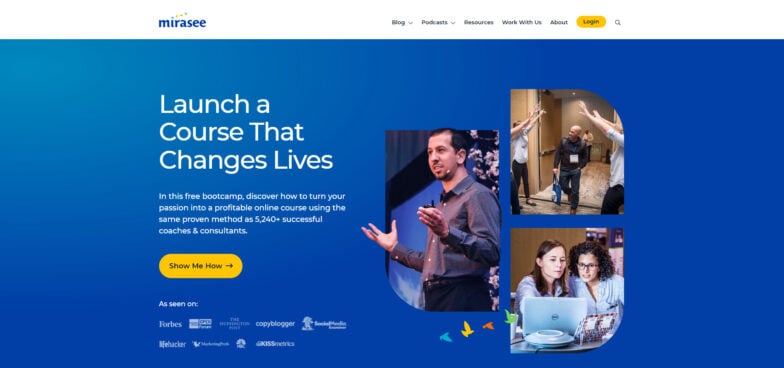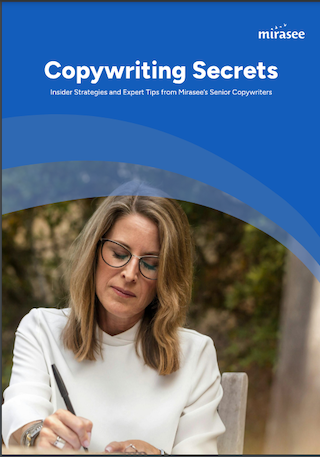What is Web Copywriting? (Plus 11 Website Copywriting Tips)
Andrew Folkler
Updated for 2024
One of the many exciting parts of building your online business is establishing your online presence.
You have done your market research. You’ve built and piloted your offer, and you know a market is ready for you to share your gift.
All you need to do now is start building your online presence.
One of the many crucial components of your online presence is how you communicate with your customer base through your web copy. Your brand voice, offer, and authority are all expressed through the copy on your site.
It might seem simple to write copy for your business website, but in reality it requires considerable thought and some degree of skill.
And the stakes are high, since readers who do not resonate with your web copy will skim through your website and exit.
In this article, you will learn about the different facets of web copywriting and how to strengthen your website’s copy.
Let’s jump right in!
What is Website Copywriting?

Website copywriting refers to the process of creating written content for your website that leads readers to buy your product or service.
Your copy is tailored to inform the reader of the following things:
- Who you are and why they should listen to you.
- What you are offering and why it benefits them.
So, with that in mind, where do you see website copywriting? Here are the most common places:
- Homepage Web Copy
- About Us Page
- Direct Response Sales Pages
- Call-to-Actions on a Button
- Contact Pages
- Pricing Pages
- Product Descriptions
- FAQ Pages
- Infographics
- Social Media Copywriting
- Press Releases
- White Papers
- Email Newsletters
Why is Web Copywriting So Important?

One of the best places to visit to learn about a company’s brand, products, and services is its website.
The website serves as a central hub to funnel traffic so that you can close more sales. And that means you need to consider all milestones in the customer journey with your web copy.
Otherwise, you risk leaving them confused and leaving your website.
This means that great website copywriting has the following functions:
- Establishes Authority: The website copy will be tailored to your target audience to show that your brand understands their needs and offers a desirable solution.
- Builds Trust: Once the reader knows your brand has authority, they need to know that your company is the one they should turn to for their problems. Therefore, your website copy will provide adequate information on your products and services. Your copywriting will also reflect the unique benefits of your products and services to motivate the reader to buy from you.
- Drives People to Take Action: Your website copy will move interested readers to take specific action to move them along the customer journey. This action might include downloading a lead magnet, booking a consultation call, or entering their payment details to purchase a product or service.
Now that you know what website copywriting is and why you need it, let’s dig deeper into how to craft your web copy for your business.
11 Web Copywriting Tips
1. Understand Your Target Audience

As always, start with your fundamentals – your target audience.
Your target audience will inform your major decisions, including but not limited to your brand voice, how you position your offer, and the types of content you will produce for your website.
Start by examining the target demographics and psychographics of your target audience. Identify who they are, their fears and desires, and what attributes they possess that make them likely buyers.
You can find information on your target audience through product reviews, surveys, competitive analysis, and client testimonials.
2. Clarify Your Main Goal for Each Piece of Content

Your homepage copy will have a different intention than your About Us page. That is why you must be crystal clear on your main goal for each piece of your website copywriting.
Each part of your website will address a specific point within the customer journey.
The customer journey can be summarized in the following steps:
- Discovery: Where the customer first learns of your brand.
- Nurturing: The customer becomes intimate with your brand.
- Engagement: Where the customer begins engaging with your brand and purchasing products.
- Excitement: Customers are immersed in your brand and excited to engage more.
- Brand Advocate: Your customer is not just a repeat customer but an advocate for your brand.
While you will likely need to adapt this customer journey to your brand needs, the basic framework is there. You will need to identify which part of the journey corresponds to the intention of your web copy.
For example, your contact page will likely be part of the engagement phase as you want the customer to interact with your company. Your home page copy, on the other hand, will be more likely to be in the discovery or nurture phase.
3. Write Compelling Headlines

One of the essential copywriting skills you need to master is writing compelling headlines.
Your headline should articulate precisely what your copy is about and why it matters to the reader. Your headline will be more prominent than the body copy. Therefore, it should carry the most weight.
A general rule of thumb when writing your headline is to remember the Pareto principle (80/20) rule. Approximately 80% of your audience will only read 20% of your web copy. And your 20% will be your headlines!
4. Be Concise and To the Point
Most web copy has limited space. That’s why being concise and to the point is so important.
Here are a few reasons why it’s important to be concise when writing web copy:
- If you pad your copy with too much filler, you will lose the opportunity to convey valuable information to your audience and increase the likelihood of your readers tuning out.
- Getting straight to the point helps your visitors to understand the main points of your message and avoid confusion.
- Clear and concise copy makes it easy for visitors to understand what you’re offering and what action they should take.
It’s important to remember that being concise doesn’t mean eliminating information, but rather it involves expressing key information in a clear manner and in as few words as possible.
5. Aim for a Conversational Tone

Unlike academic writing, copywriting is written conversationally. The reader should feel like you are sitting across from them. As a general rule of thumb, conversational writing uses simple vocabulary, is written at a 7th-grade level, and reflects the way people talk.
Writing in a conversational tone has several advantages.
The first advantage is that it is easier to read. As the world continues to globalize, you may attract customers who do not speak your language natively. By writing conversationally, your readers can follow your message easily. The more strain the reader has while reading your web copy, the more likely they will not buy your product or service because they lack clarity.
The second advantage is that your brand voice will appear more trustworthy. When you communicate too formally, you create a sense of hierarchy instead of trust. That is why your language should break away from formality (within reason) and read as someone approachable and friendly.
6. Stick With Active Voice

Active voice is where the subject performs the action, while passive voice is where the subject receives the action.
Here is a quick example.
Active voice: If you love to read books, then sign up for the literature workshop
Passive voice: Sign up for the literature workshop if you like to read books.
The content between the two sentences is precisely the same. However, the impact is quite different. The subject is the reader, and the action is signing up for the literature workshop.
With an active voice, you can qualify your readers before encouraging them to take action. Your readers feel compelled to continue and sign up because they know you are speaking to them.
However, passive voice creates a weaker call to action. The emphasis is on the workshop instead of the reader. As a result, the reader is less likely to sign up because the language is not as compelling.
Typically, you will want your website copywriting to be in active voice as much as possible.
7. Focus on the Benefits You Offer

In sales, there are features and benefits.
Features are attributes of your product or service. Benefits reflect the impact that your features will have on the customer. For example, let’s say you are a business coach.
Features in your coaching program would be things like:
- Weekly coaching sessions
- A community to network with
- An online course to supplement learning
However, if you only focus on the features, you cannot convince your audience to buy your product or service. That is why you must hone in on the benefits.
A great way to dig deeper into what benefits your features offer your customers is to use the technique called, ‘So What?’
In this exercise, take one of your features and ask yourself, ‘So what?’ Repeat the exercise 5 times.
Here is an example of this in play.
Our program has weekly coaching sessions.
So what?
In these calls, students can come and get answers to their questions and learn more about what they need to do next.
So what?
With this immediate feedback, they can get unstuck in their business.
So what?
Getting unstuck now means they can grow their business faster. This means more revenue.
So what?
Students can achieve their business, financial, and personal goals with more revenue.
So what?
When the student achieves their goals, they will create a positive impact on the world and on themselves. They will be empowered and feel great about themselves.
In this practice exercise, you can see how to dig deep into your offer’s benefits. The more benefits you can highlight in your product or service, the more compelling it is to your audience.
Benefits reflect the emotional triumph and the customer’s transformation when using your product or service. However, they are often afraid of failure, so you have to show them that they intentionally sabotage their chance of receiving all these benefits by doing nothing.
8. Provide Social Proof

You can tell a customer all the benefits of your product or service, and they still might think, “But will it work for me?”
That is where your social proof comes in.
Your social proof comes in the form of reviews, testimonials, referrals, earned media, endorsements, and social media shares.
Customers are afraid of what they don’t know. They are afraid of failure or things going wrong. Often they carry self-doubt and are confused about what to do. When your audience can see that many others have had similar experiences and found success with your brand, they will feel more secure purchasing your product or service.
The more positive social proof you share, the greater its impact on your audience. That is why two 5-star reviews do not look as good as 250 reviews with an average of 4.9 stars.
You can place your social proof in your web copy in several places to drive people to purchase your product or service.
- At the beginning of your home page to build instant authority
- After you explain the benefits of your product or service
- Before and after the call to action
- At the end of case studies
- On products or services pages
- Contact pages
- In direct response sales letters
9. Use Powerful CTAs That Motivate Action
You have built trust and excitement through your website copywriting. Now it is time to move the reader to the next stage of the customer journey. Powerful calls to action push your audience to take action immediately.
There are several places where you may have a CTA:
- Requests for Demos
- Newsletter Subscription Forms
- Contact Forms
- Playable Videos
- Buttons
- Sharing on Social Media
- Event Registration
- Taking a Quiz
- Reading Relevant Content
To create a call to action that moves people to take action, you need to combine several of the previously mentioned tips.
First, you want to be clear on what you want the audience to do. If you want them to request a demo, your button copy should say that. Your copy should be concise and written in active voice.
That is why a button that says “Learn More” is less impactful than “Request a Demo.”
If you are a coach, you might have a call to action that says, “Sign Me Up for Coaching.” The reader will know exactly what happens when they click on the button.
Another thing you can do is write your button copy to reflect the benefits or transformation that you are promising to your audience. For example, if you are promoting a fitness program, you could have a CTA like, “Yes! I want to be in great shape!”
Again, when the reader clicks on the CTA, they are mentally committing to the transformation that you have promised.
10. Remember to Break Up Your Copy

As technology continues to evolve, so do the devices we use to surf the web.
Today, internet users have moved away from using their desktops as their sole device. They may use tablets, smartphones, laptops, or even screens as small as an Apple Watch.
This is why web copywriting has moved away from large blocks of text. A large block of text is harder to read and it is easy to lose your place. The reader might disconnect from your brand because they feel it is too strenuous to read your content.
That is why it is important to break up your website copy into smaller sections through the use of headlines, photos, graphics, and other elements.
Additionally, you will want to split up your content into shorter paragraphs, typically no more than 3-4 sentences. That way, when you view the same content on a smaller device, the content will not feel as compact.
The user experience is critical in ensuring the reader stays engaged with your website. Anytime they feel like they are wasting their time and effort, they will leave, which can harm your sales and brand interactions.
11. Keep SEO in Mind
Search engine optimization (SEO) is a critical component of website copywriting. When you optimize the SEO of your website, you increase your organic search.
There are several ways you can optimize your web copy for SEO, including:
- Include relevant keywords in the copy and headlines
- Strategic use of backlinks and internal links
- Ensure you use ‘dofollow’ links
- Update your SEO title and meta description
- Remove any broken links on your website
- Avoid harmful SEO practices like keyword stuffing and link stuffing
Optimize Your Web Copywriting For Your Business
Now that you have a foundation for powerful web copywriting, it is time to put these tips into practice. As you review your web copy, look for opportunities to optimize your tone and CTAs to avoid missing potential leads and sales.
Web copywriting is an iterative process. That means you will continue optimizing your copy repeatedly as your business grows and evolves.
So start your journey today and craft compelling web copy that will enable you to continue to share your gift with your audience!
Elevate Your Copywriting Game!
Discover winning strategies and insider tips for writing words that sell - from Mirasee’s very own expert copywriting team!